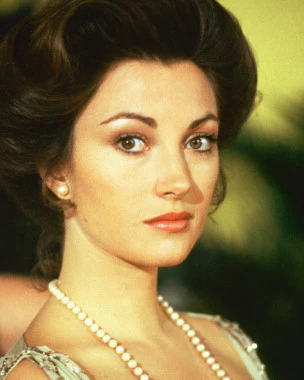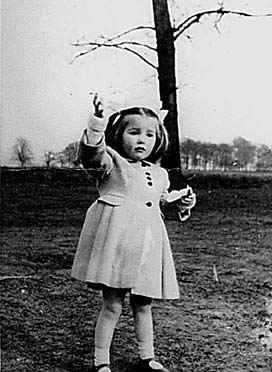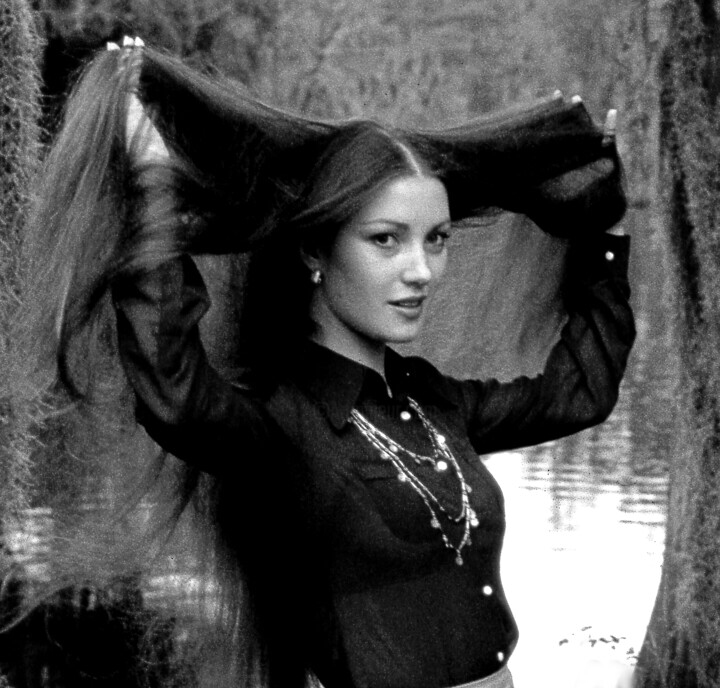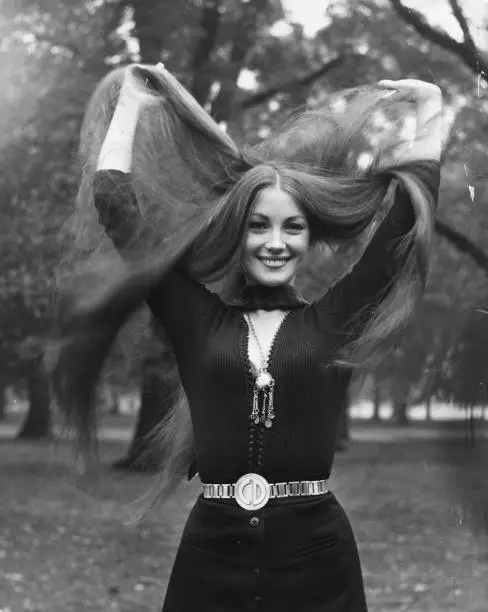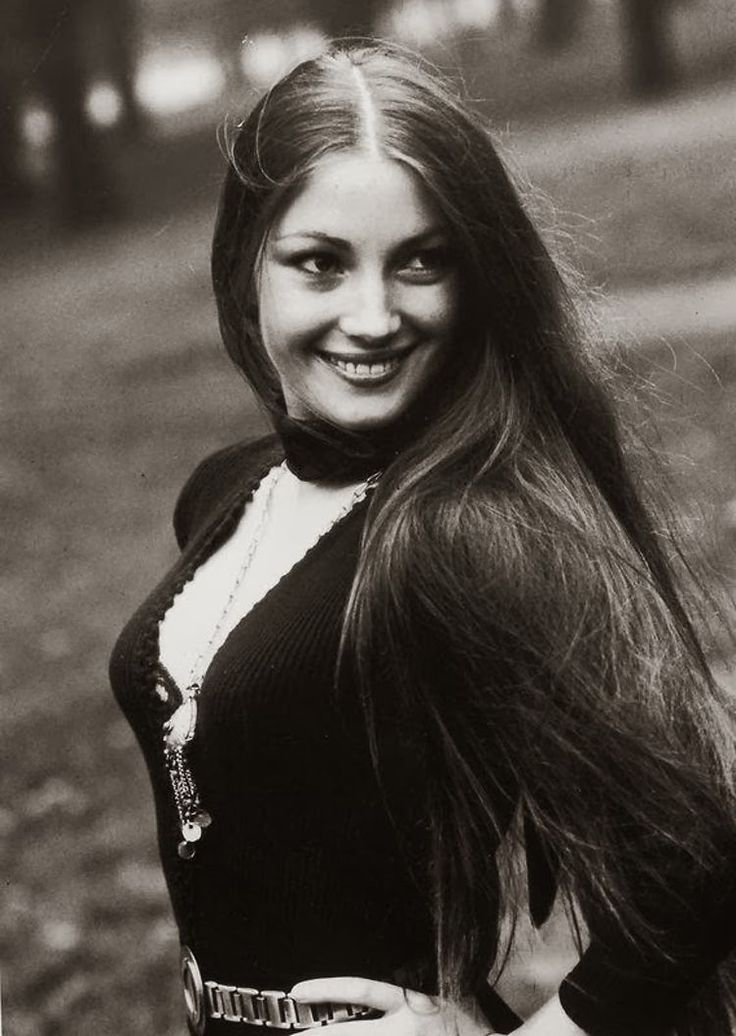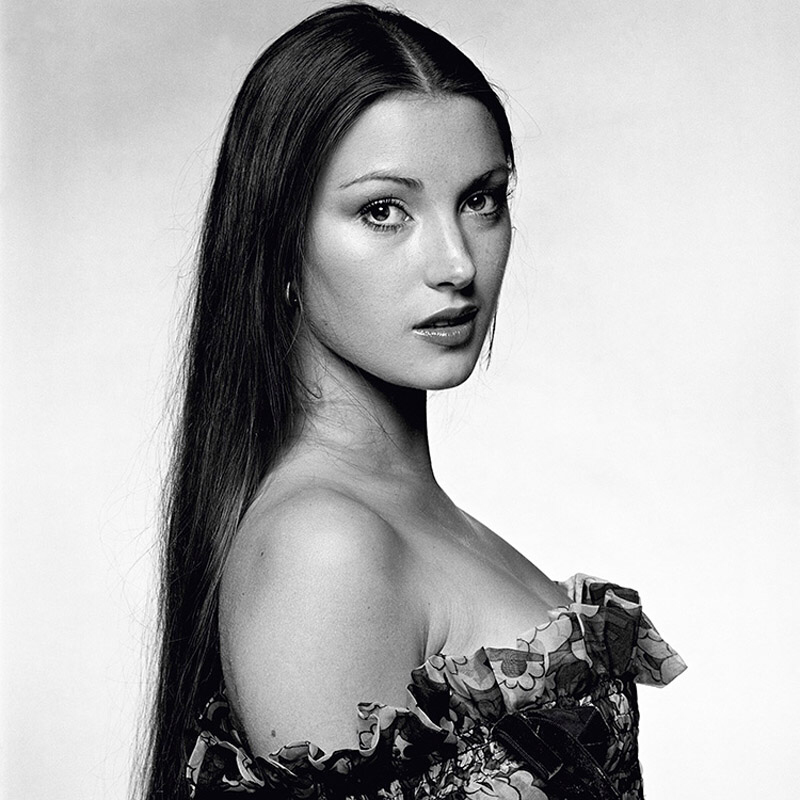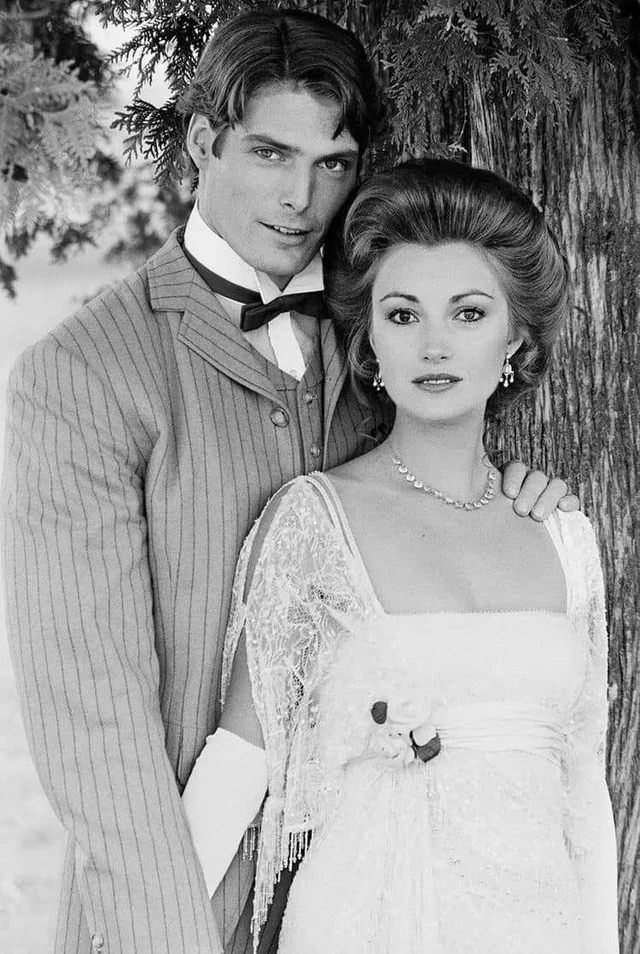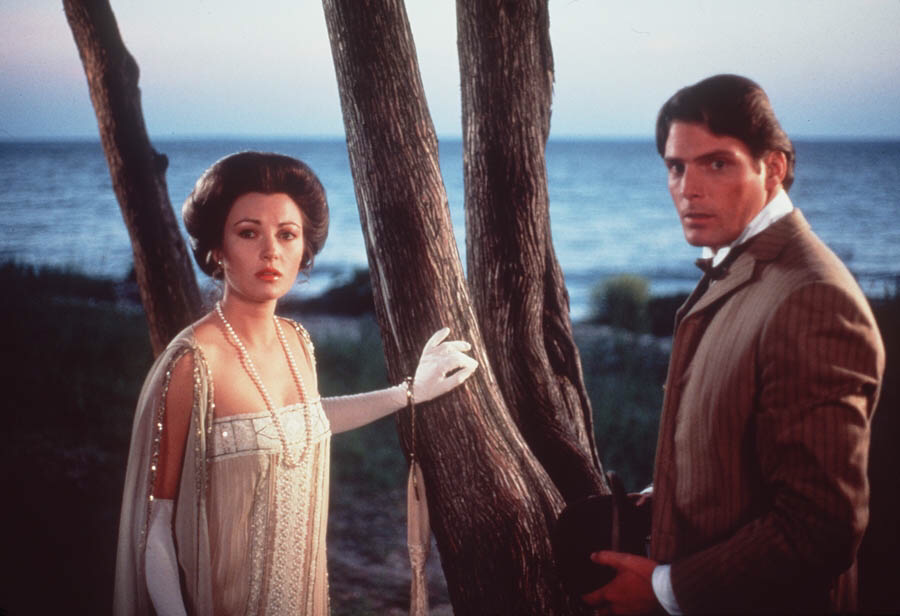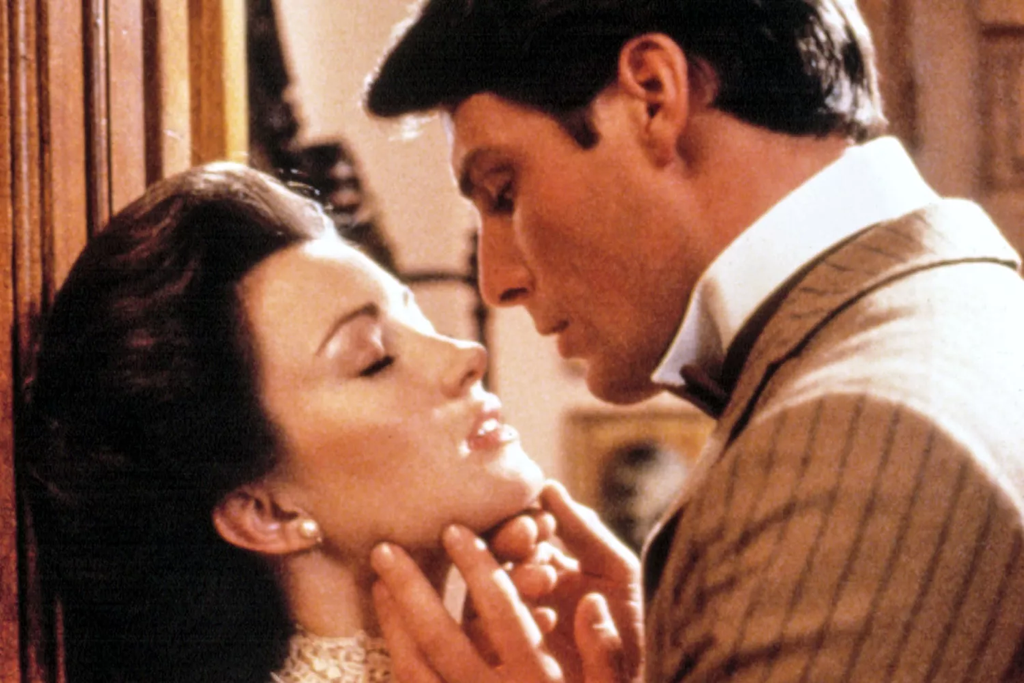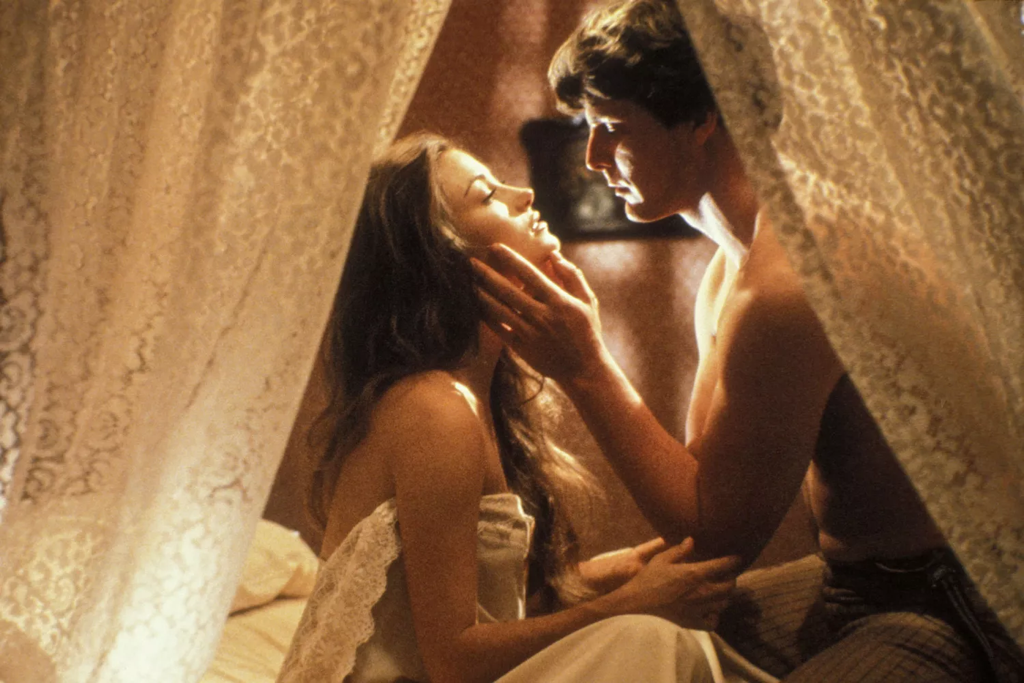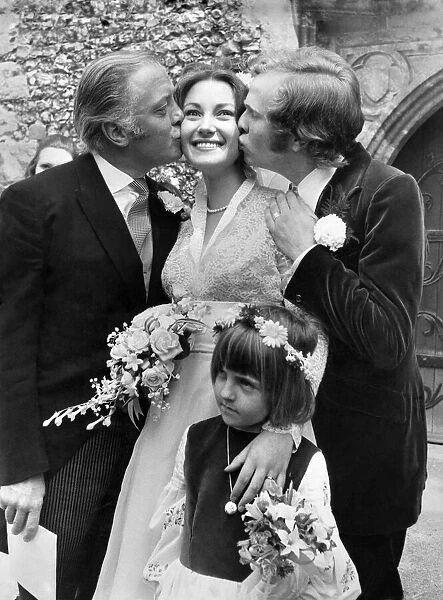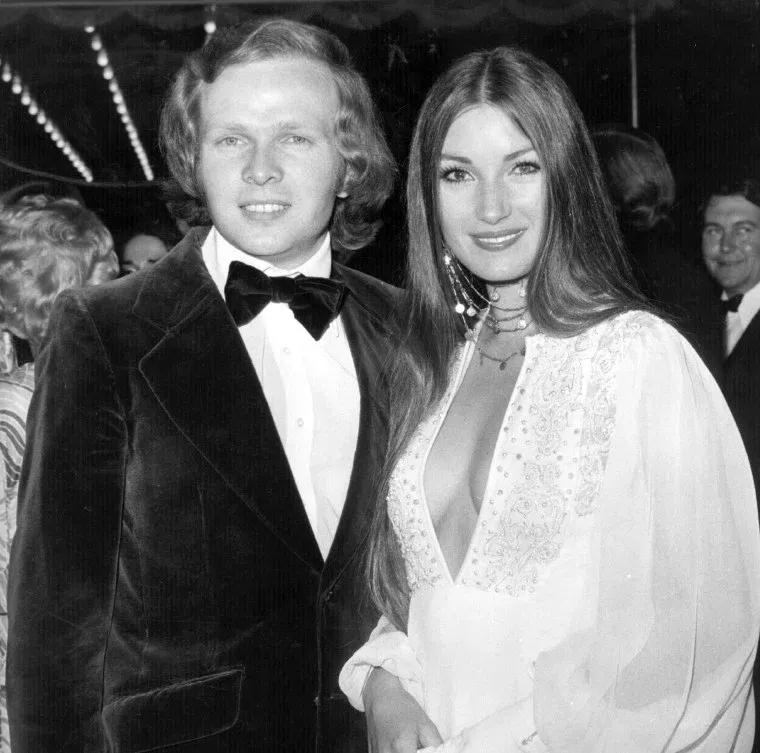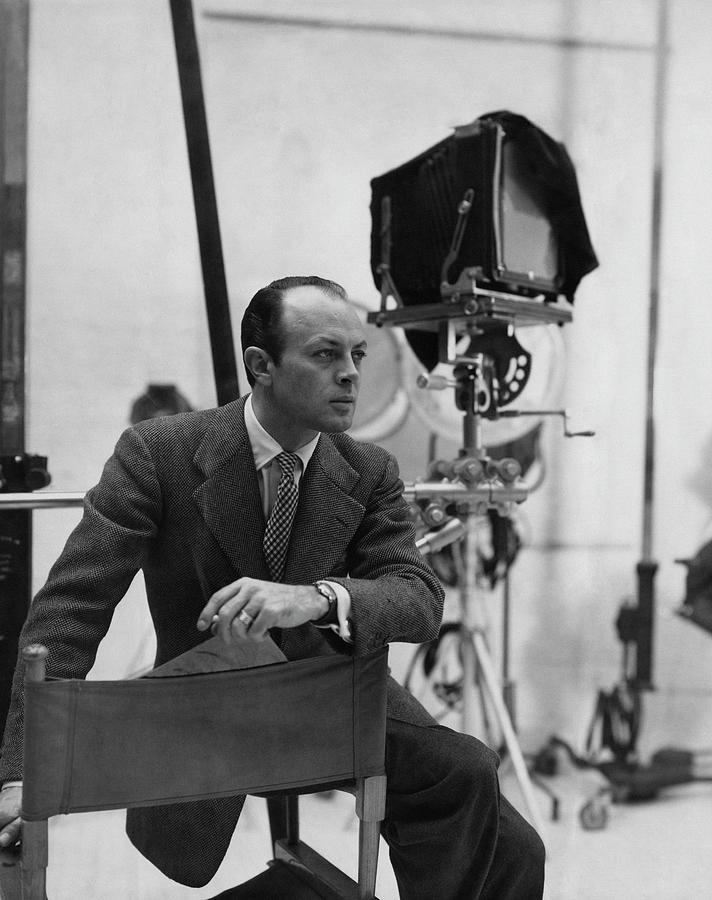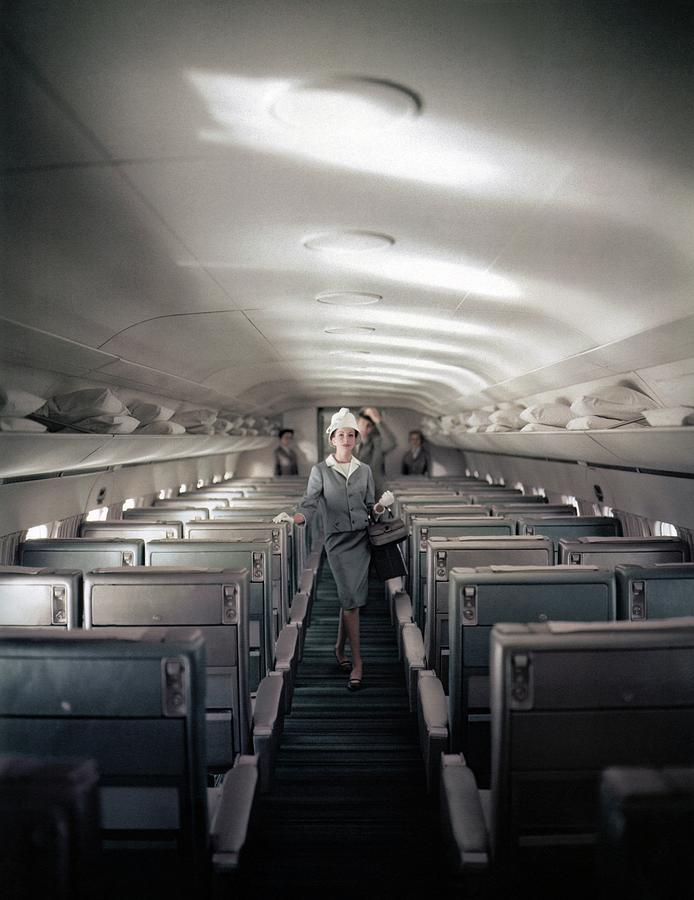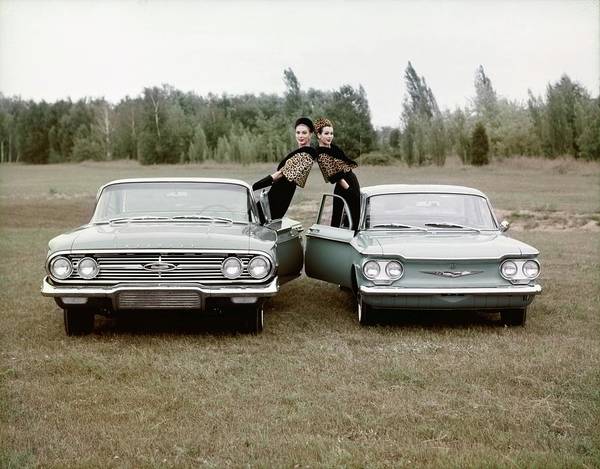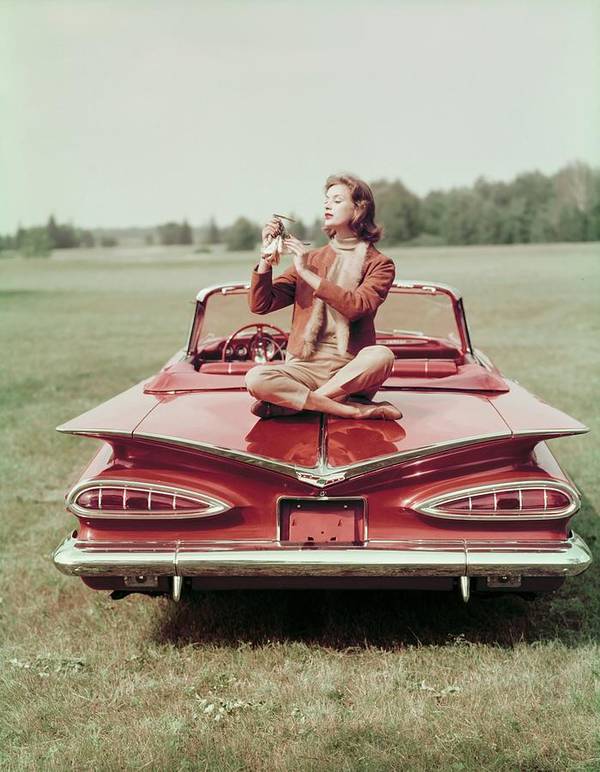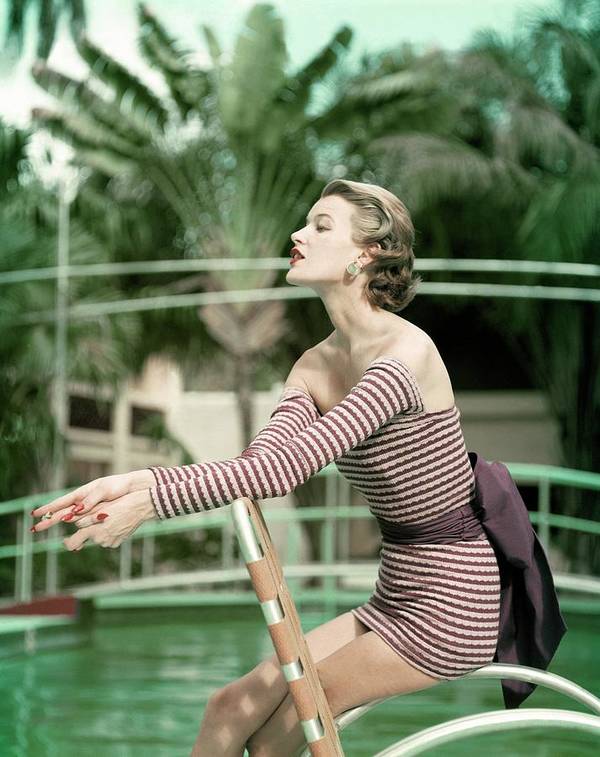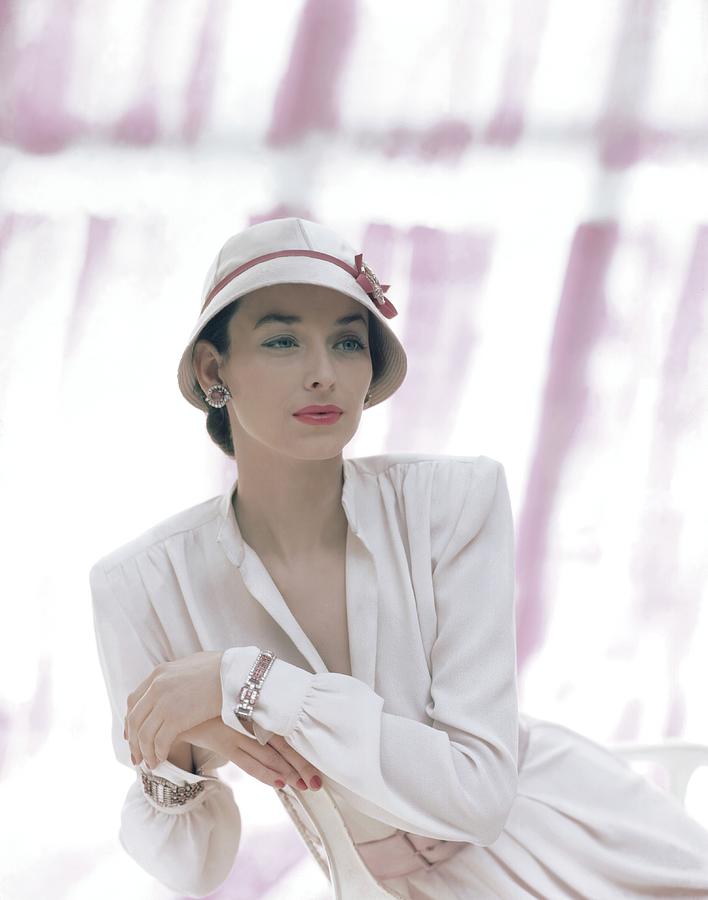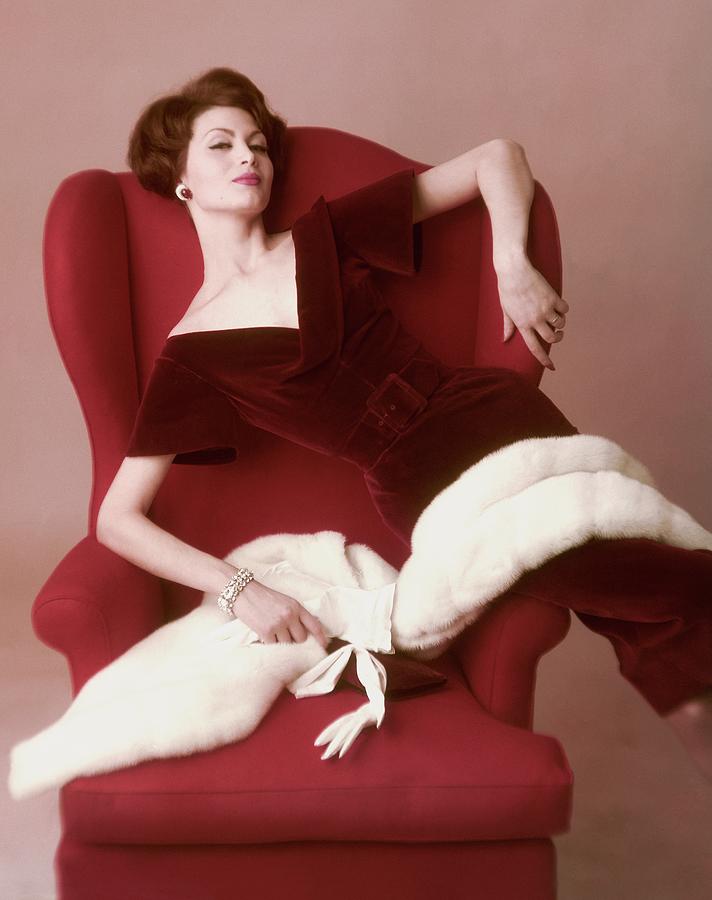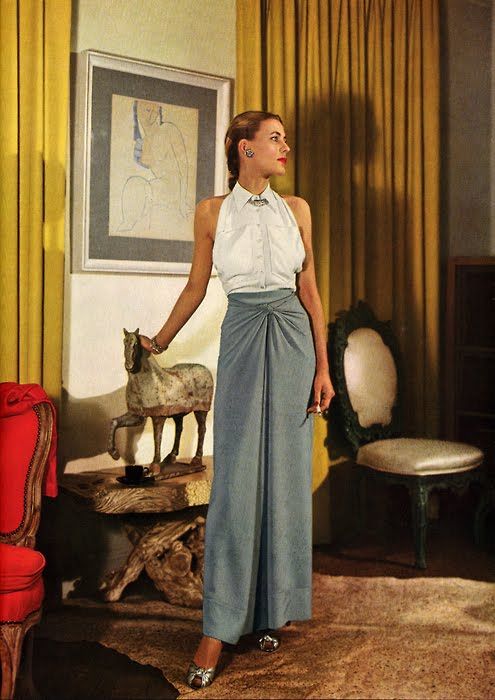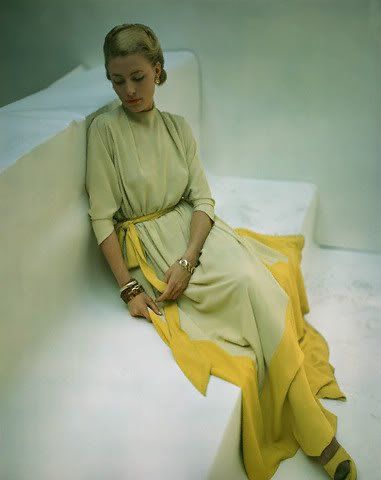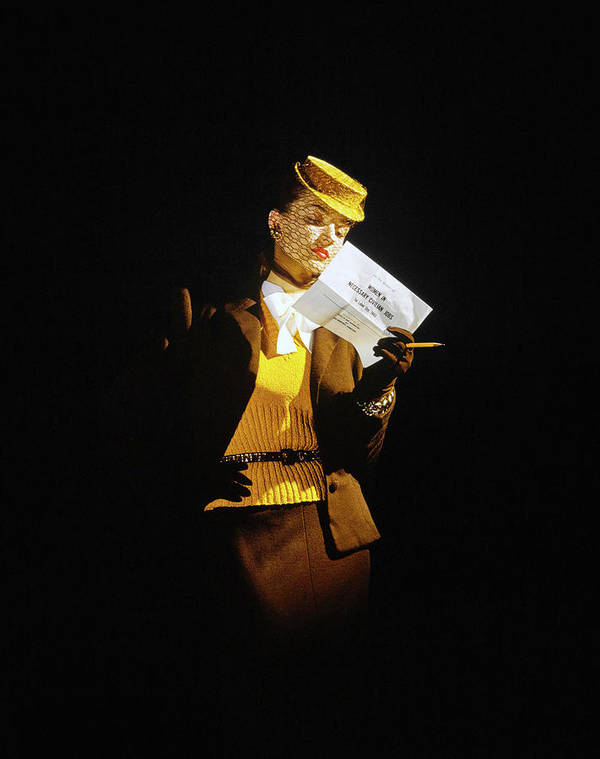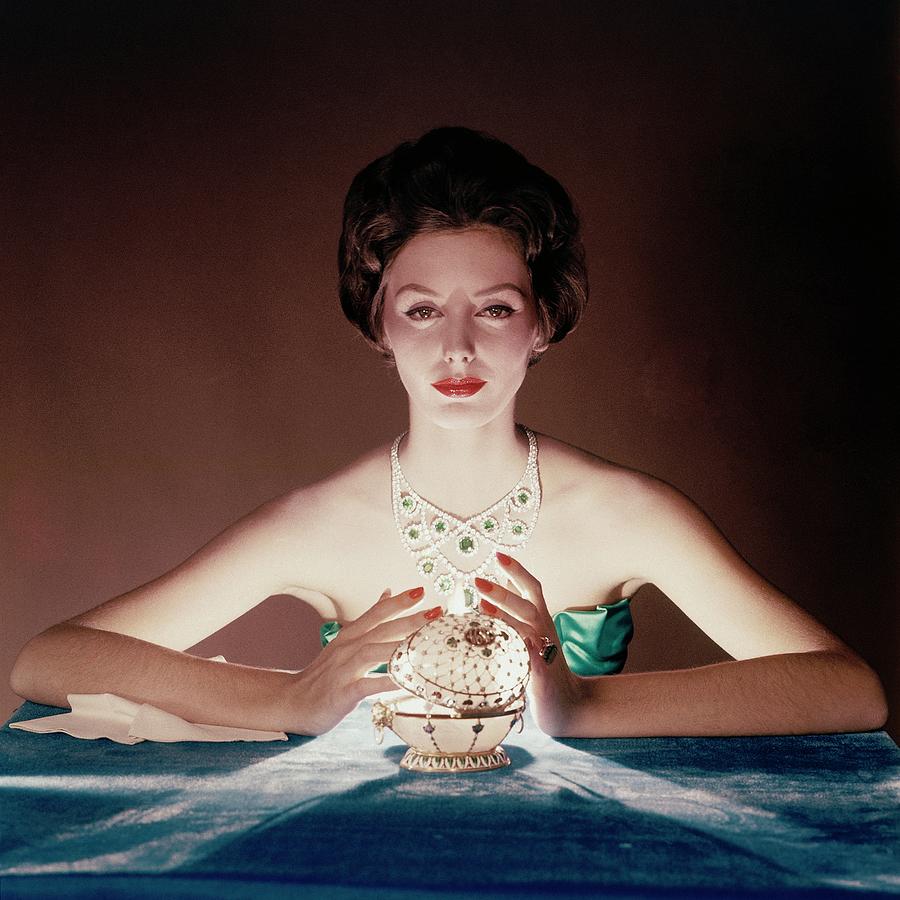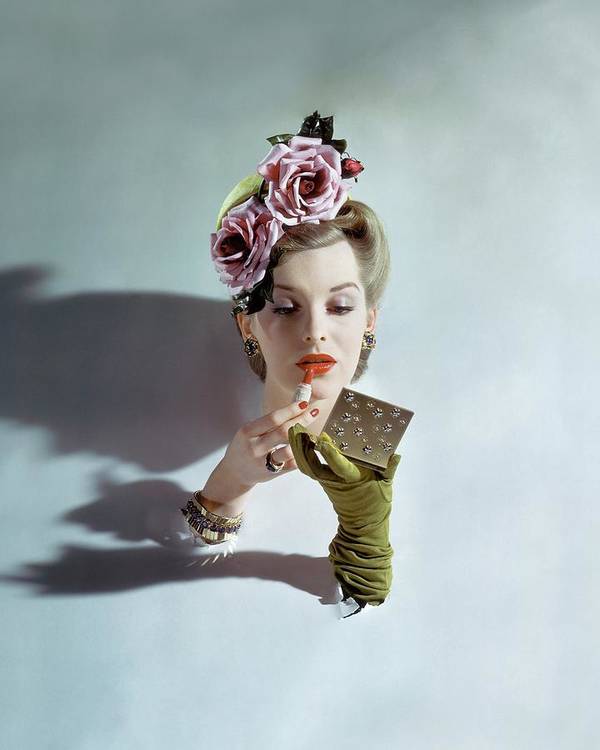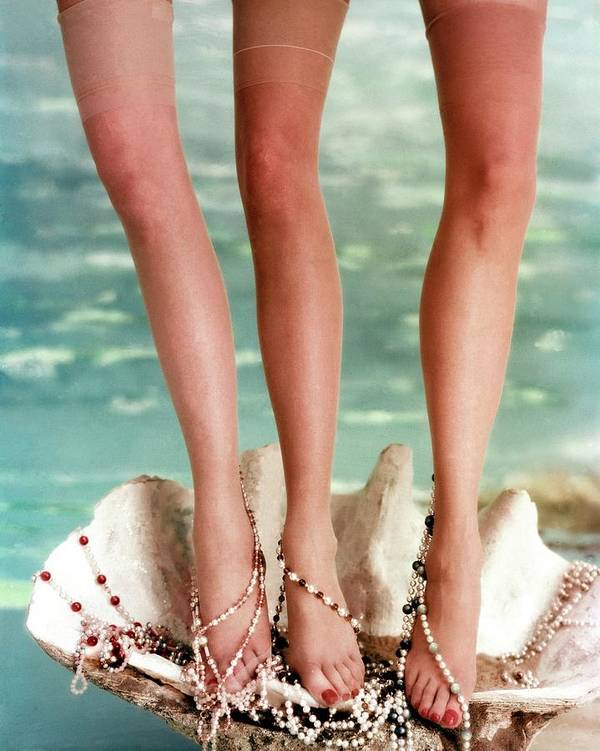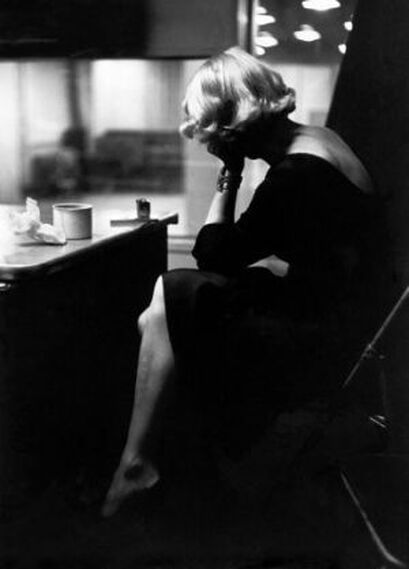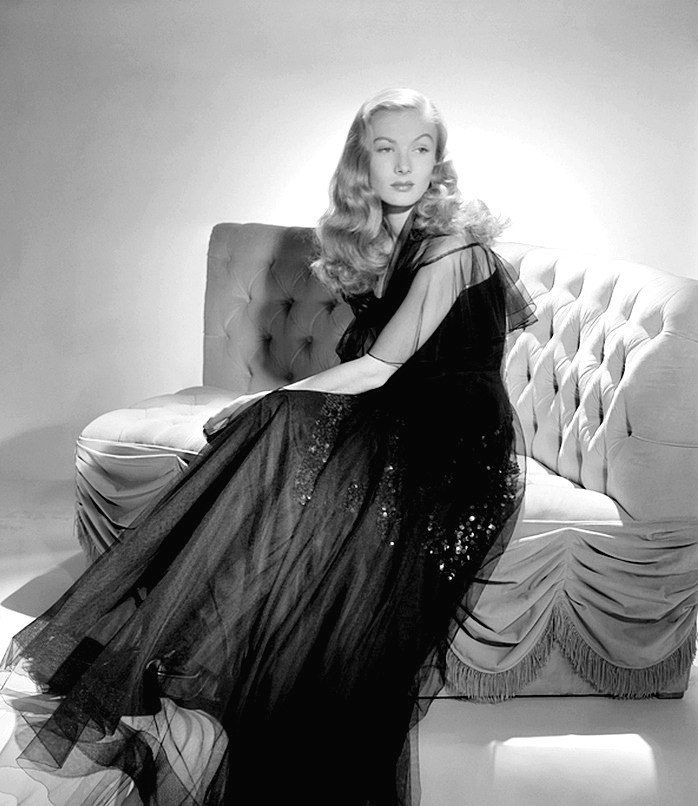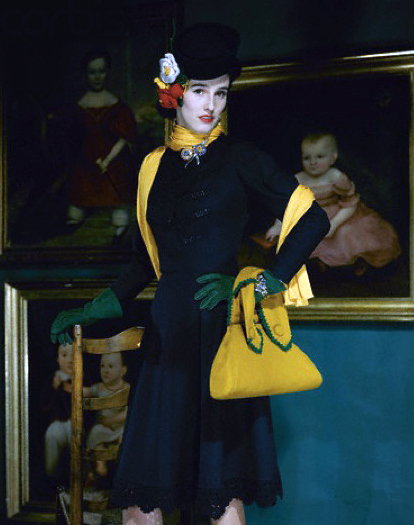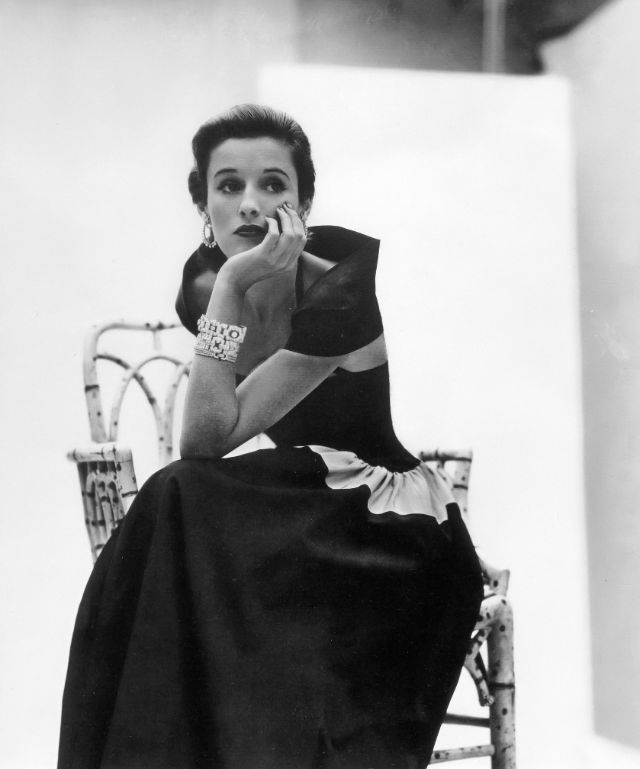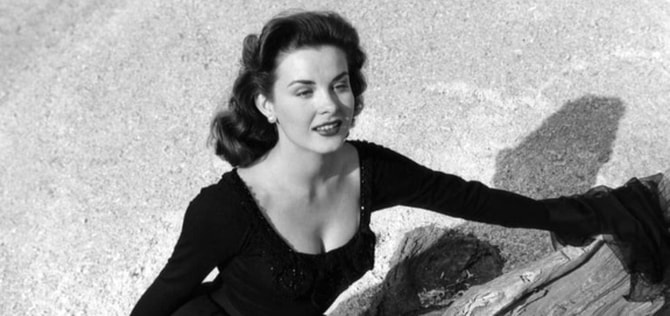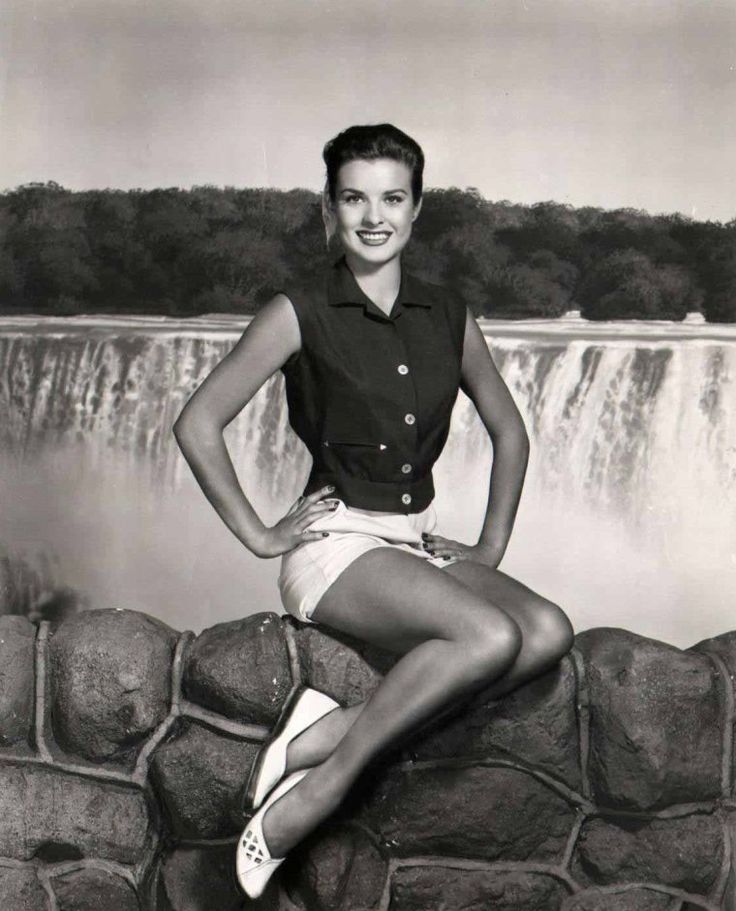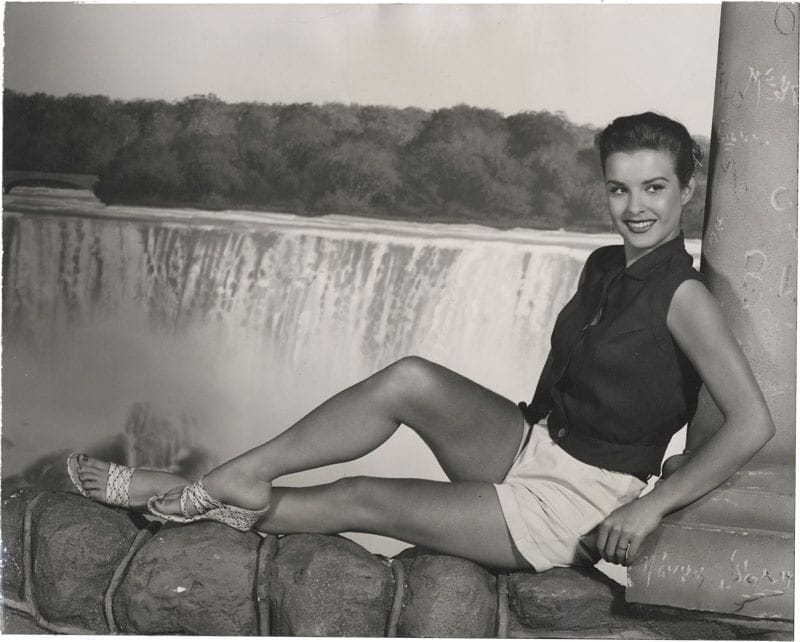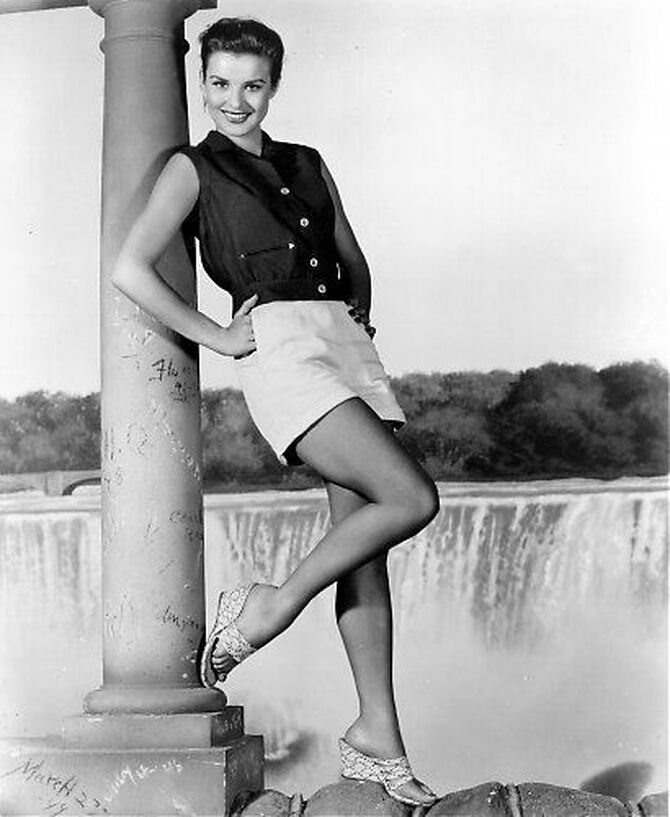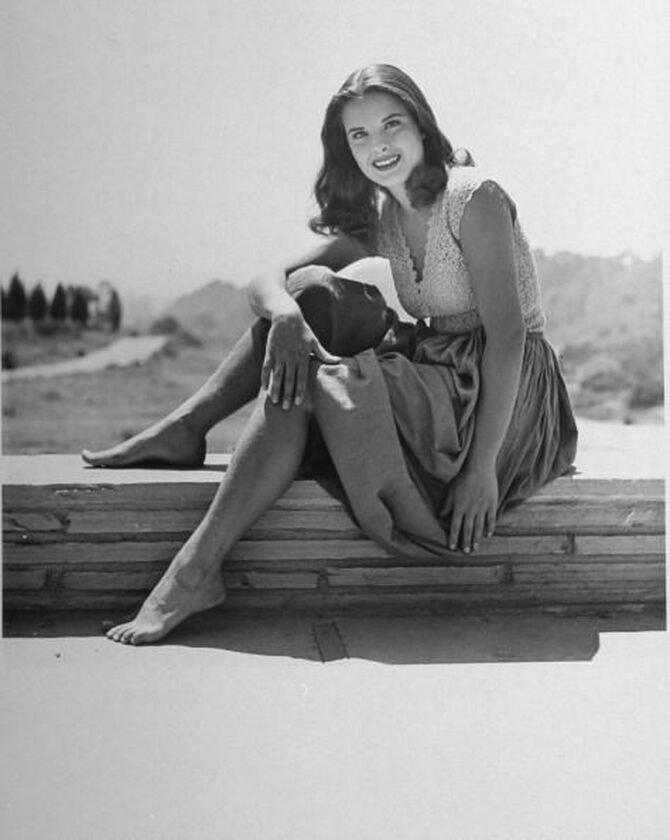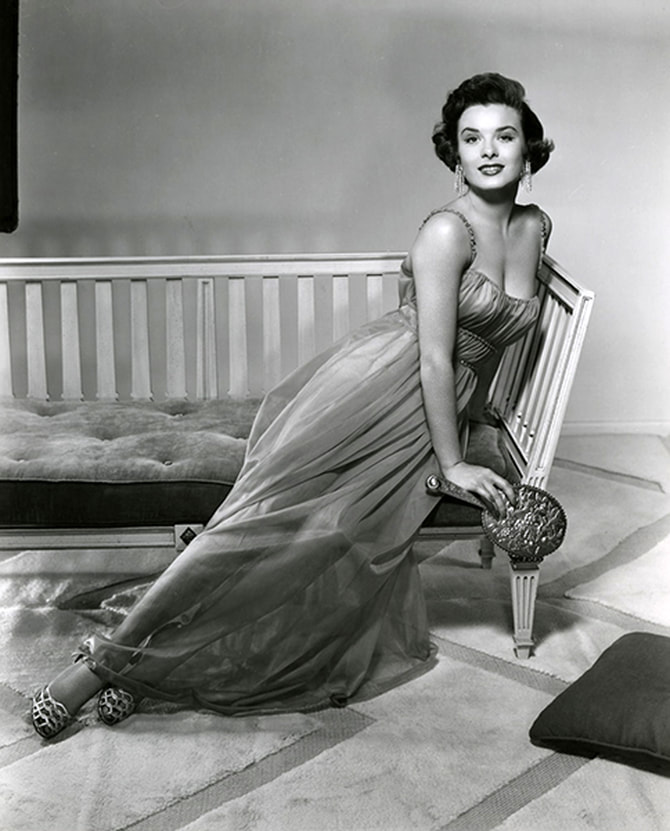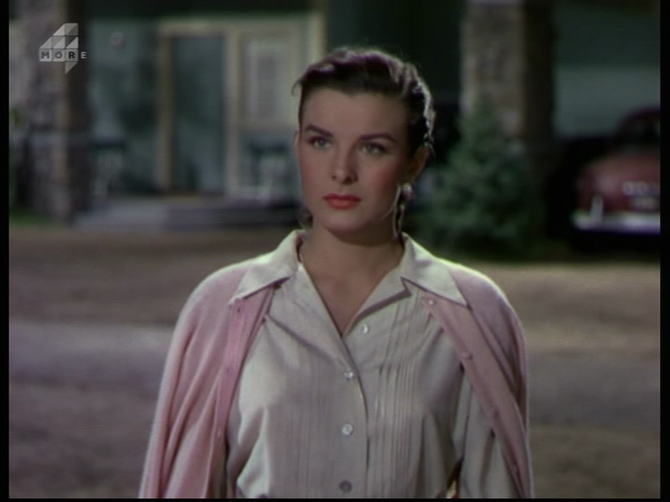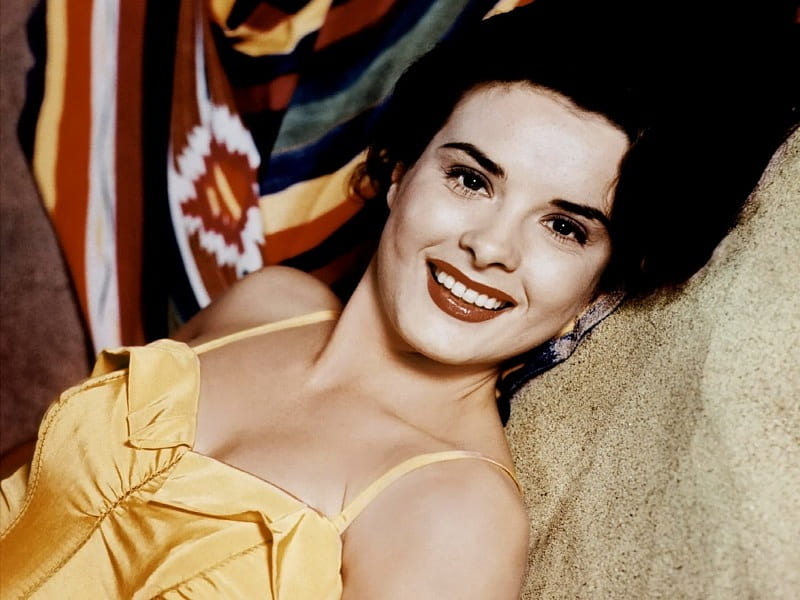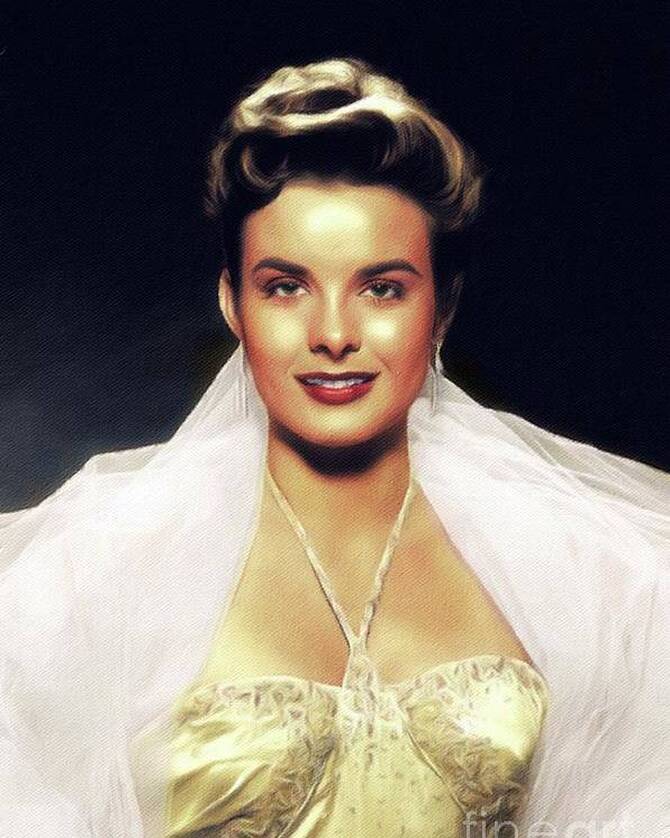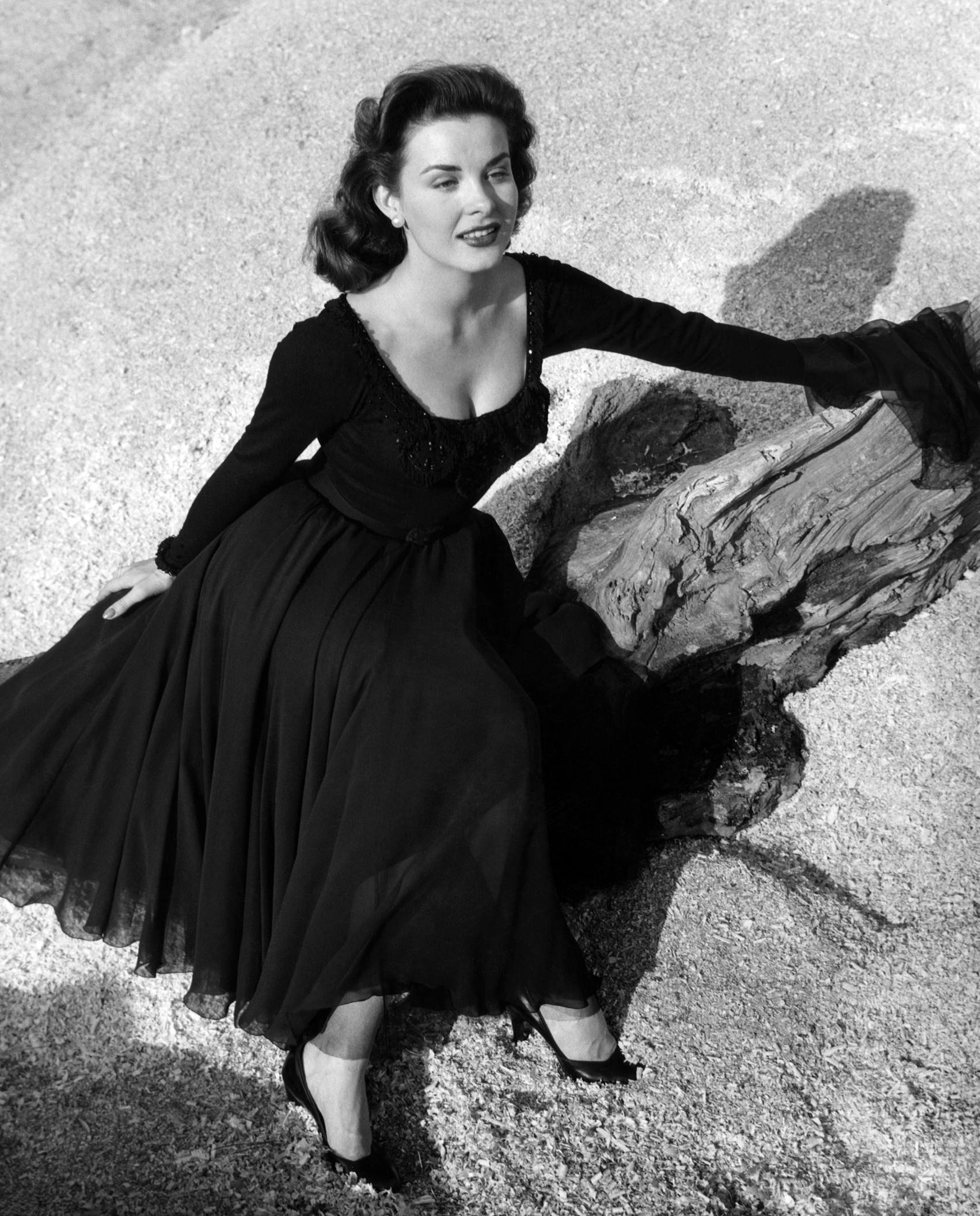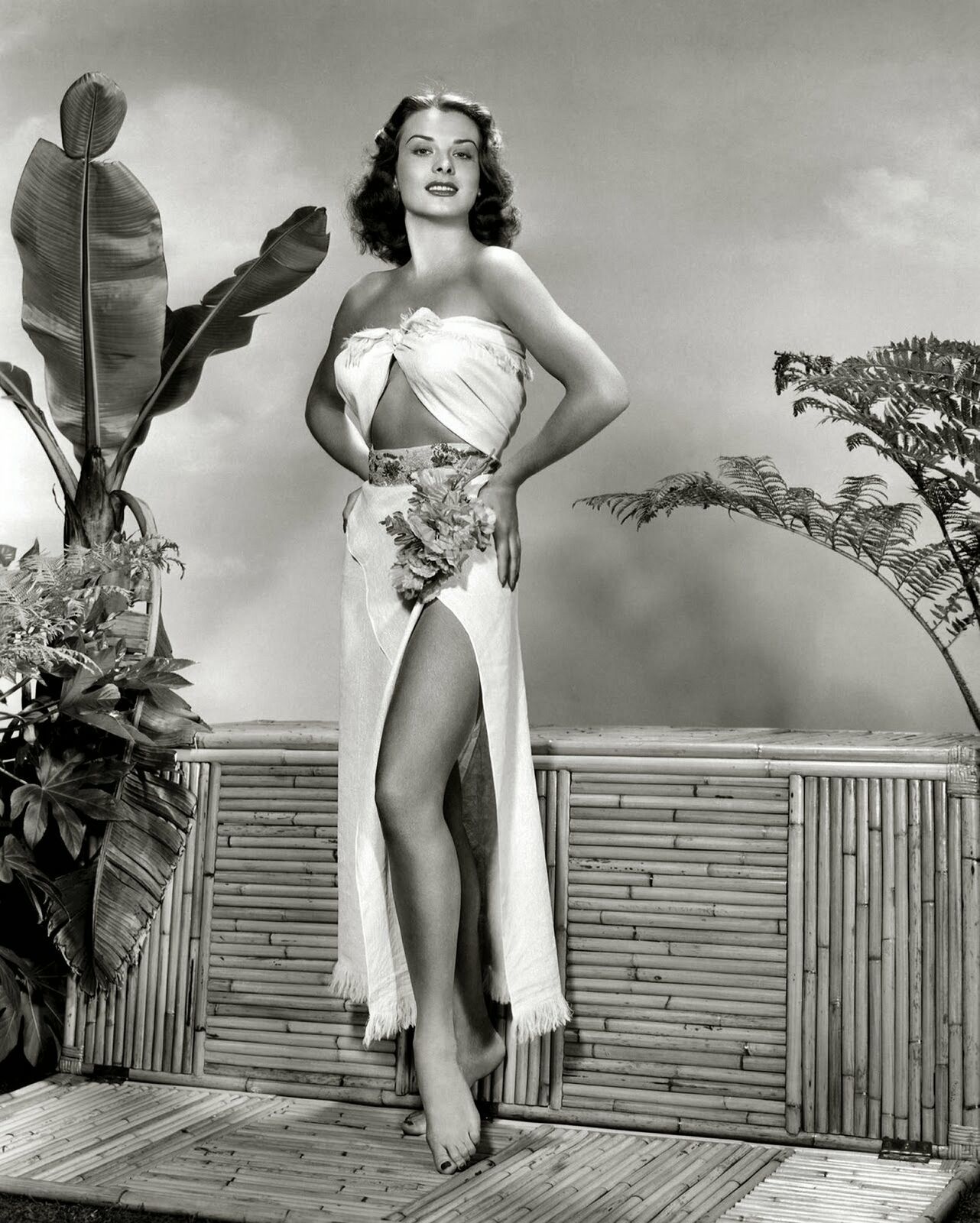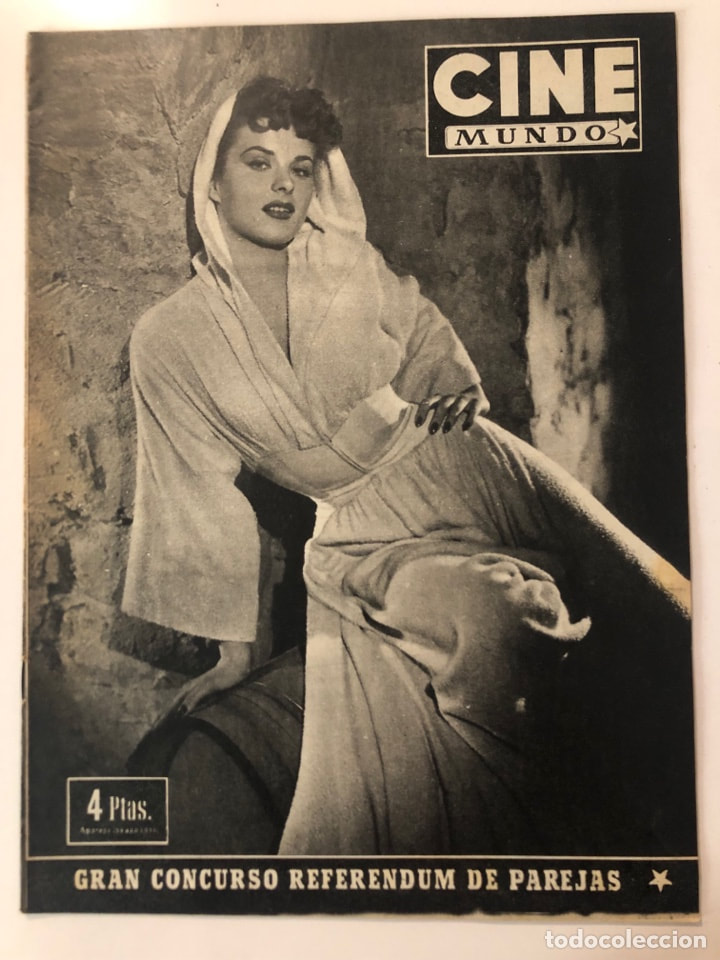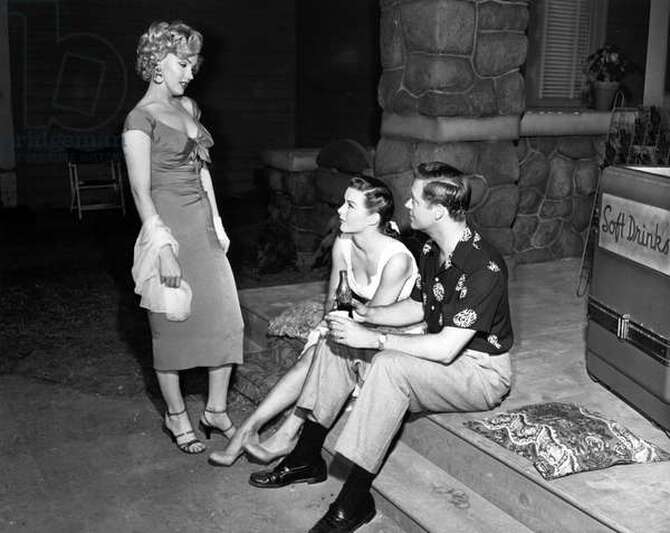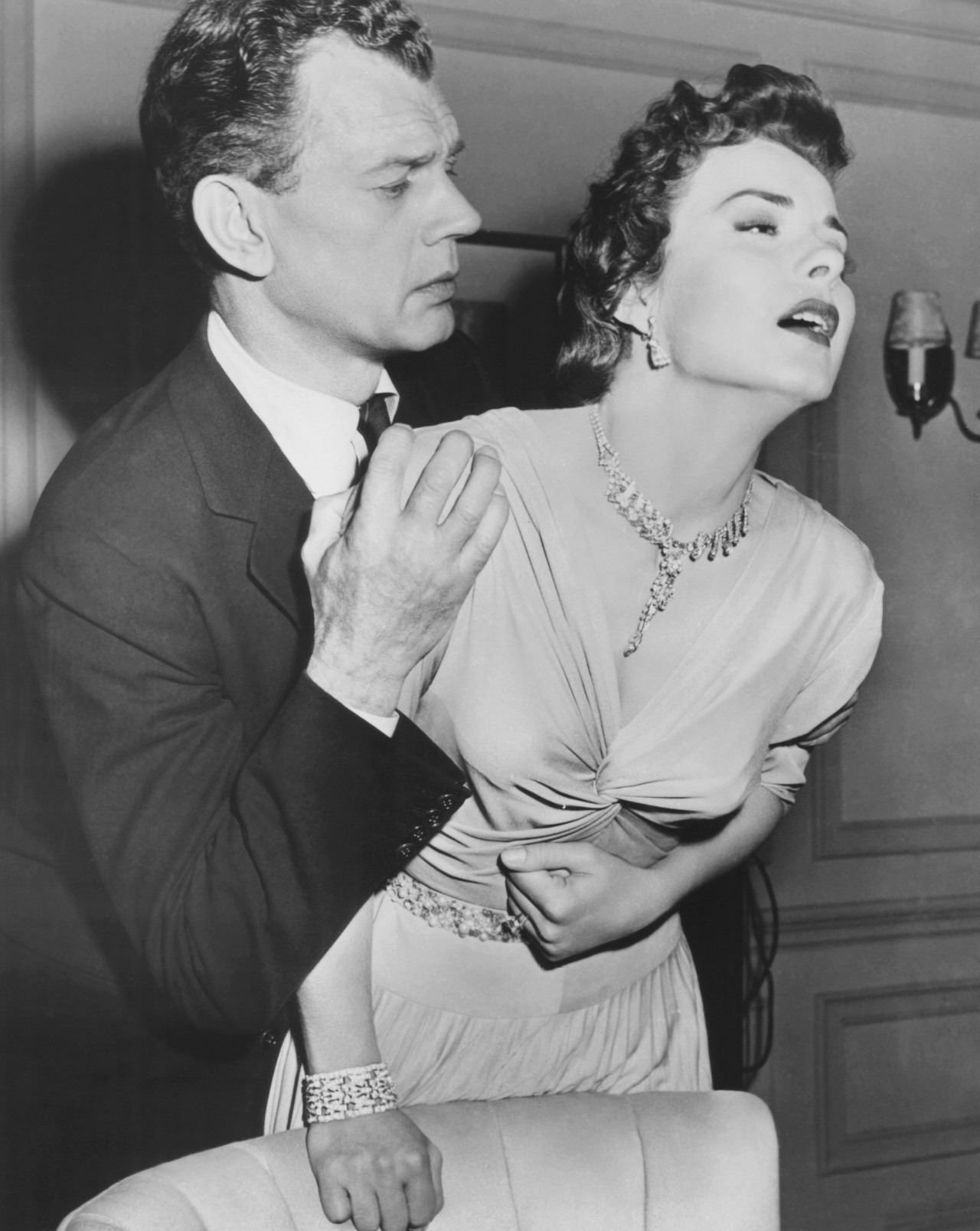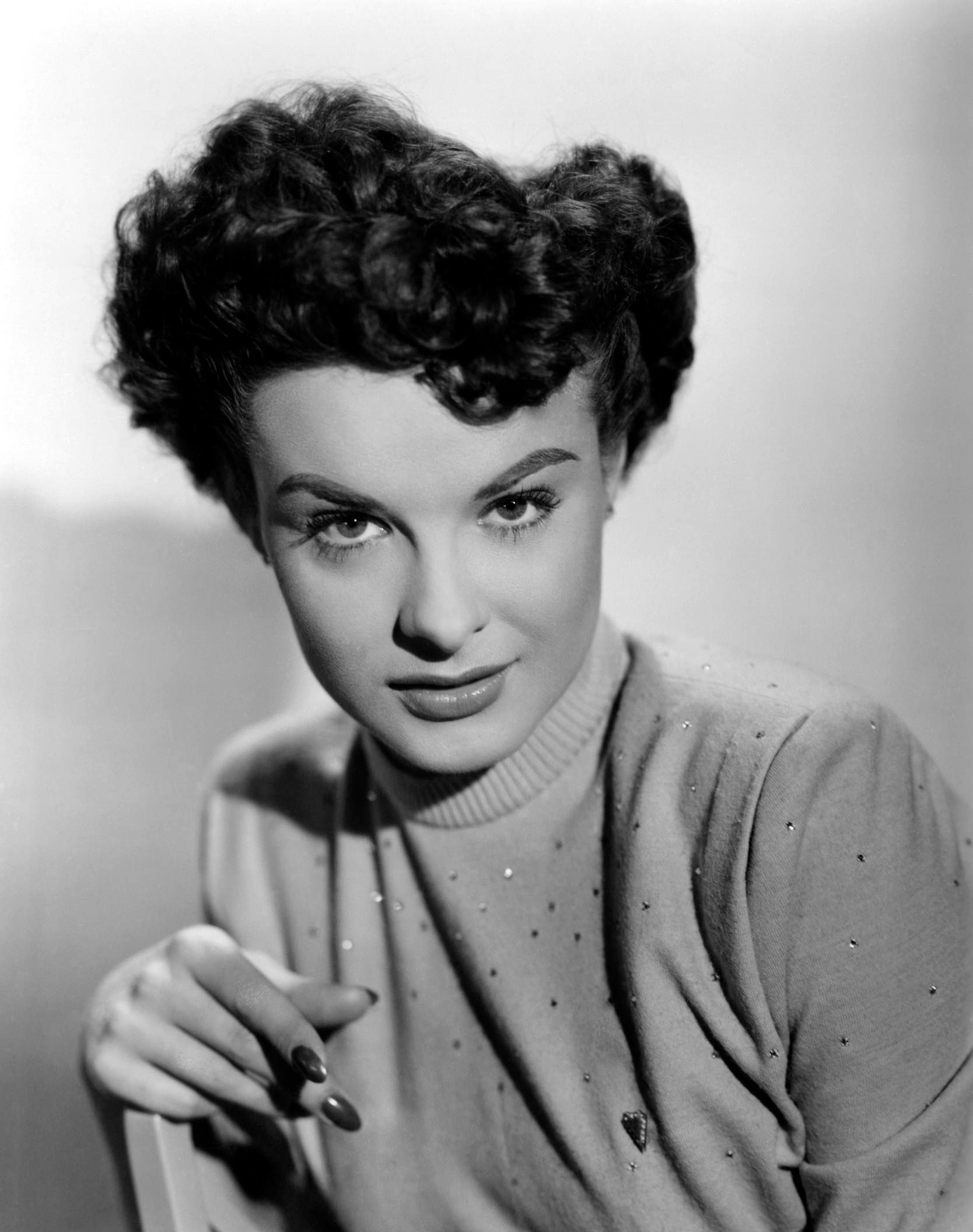|
Jane Seymour OBE (born Joyce Penelope Wilhelmina Frankenberg; 15 February 1951) is an English actress. After making her screen debut as an uncredited extra in the 1969 musical comedy Oh! What a Lovely War, Seymour transitioned to leading roles in film and television, including a leading role in the television series The Onedin Line (1972–1973) and the role of psychic Bond girl Solitaire in the James Bond film Live and Let Die (1973). In 1982, Seymour won her first Golden Globe Award for Best Actress in a Miniseries or Motion Picture Made for Television for the miniseries East of Eden (1981). She received additional Golden Globe nominations in the same category for the television film The Woman He Loved (1988), in which she portrayed the American wife of King Edward VIII, Wallis Simpson, and the miniseries War and Remembrance (1988-1989), for which she was nominated twice consecutively. By this time, Seymour had won a Primetime Emmy Award for Outstanding Supporting Actress in a Miniseries or a Special for Onassis: The Richest Man in the World (1988), in which she played Maria Callas. In 1993, Seymour was cast as Dr. Michaela Quinn in the television series Dr. Quinn, Medicine Woman, a medical drama set in the Wild West which ran for 6 seasons and resulted in a further two nominations for the Primetime Emmy Award for Outstanding Lead Actress in a Drama Series and four nominations for the Golden Globe Award for Best Actress in a Television Series – Drama (including one win), and two nominations for the Screen Actors Guild Award for Outstanding Performance by a Female Actor in a Drama Series. Seymour was given a star on the Hollywood Walk of Fame and, in 2000, was appointed an Officer of the Order of the British Empire. Seymour's other film roles include Somewhere in Time (1980), The Scarlet Pimpernel (1982), La Révolution française (1989), Wedding Crashers (2005), Love, Wedding, Marriage (2011), Little Italy (2018), The War with Grandpa (2020) and Friendsgiving (2020). In addition to her acting career, Seymour is the founder of the Open Hearts Foundation as well as an author, having (co-)written several children's books and self-help books. Under the Jane Seymour Designs label, she has created jewellery, scarves, furniture, rugs, handbags, paintings and sculptures. BiographyJoyce Penelope Wilhelmina Frankenberg was born on 15 February 1951 in Uxbridge, Middlesex (now part of Greater London), England, to Mieke van Tricht (1914–2007), a nurse, and Benjamin John Frankenberg FRCOG (1914–1990), a distinguished gynaecologist and obstetrician. Her father was Jewish who was born in England, to a family from Nowe Trzepowo, a village in Poland. Her mother was a Dutch Protestant who was a prisoner of war during World War II and had lived in the Dutch East Indies (now Indonesia). Seymour has stated she learned Dutch from her mother and her fellow survivors from the Japanese internment camp, who frequently spent holidays together in the Netherlands when she was a child. Encouraged by her parents, she learned to speak fluent French as well. Seymour was educated at Tring Park School for the Performing Arts in Hertfordshire. She chose the screen name Jane Seymour, after the English queen Jane Seymour, because it seemed more saleable. One of Seymour's notable features is heterochromia, making her right eye brown and her left eye green. In 1969, Seymour appeared uncredited in her first film, Richard Attenborough's Oh! What a Lovely War. In 1970, Seymour appeared in her first major film role in the war drama The Only Way. She played Lillian Stein, a Jewish woman seeking shelter from Nazi persecution. In 1973, she gained her first major television role as Emma Callon in the successful 1970s series The Onedin Line. That same year, Seymour achieved international fame in her role as Bond girl Solitaire in the James Bond film Live and Let Die. IGN ranked her as 10th in a Top 10 Bond Babes list. In 1980, Seymour played the role on stage of Constanze in Peter Shaffer's play Amadeus, opposite Ian McKellen as Salieri and Tim Curry as Mozart. The play premiered on Broadway in 1980, ran for 1,181 performances and was nominated for seven Tony Awards, of which it won five. That same year, Seymour was given the role of young theatre actress Elise McKenna in the period romance Somewhere in Time. Though the film was made with a markedly limited budget, the role enticed Seymour with a character she felt she knew. The effort was a decided break from her earlier work, and marked the start of her friendship with co-star Christopher Reeve. The two fell in love madly during filming but broke up by the end of filming, when Christopher Reeve was told that his ex-girlfriend Gae Exton, was pregnant with their son, Matthew. It broken Jane Seymour’s heart but she remained a close friend of Christopher Reece until his death. In 1981, she appeared in the television film East of Eden, based on the novel by John Steinbeck. Her portrayal of main antagonist Cathy Ames won her a Golden Globe. In 1982, she appeared in The Scarlet Pimpernel with Anthony Andrews and her Amadeus costar Ian McKellen. In 1987, Seymour was the subject of a pictorial in Playboy magazine, although she did not pose nude. In 1988, Seymour got the female lead in the twelve part television miniseries War and Remembrance. She played Natalie Henry, an American Jewish woman trapped in Europe during World War II. That same year, she won an Emmy Award for playing Maria Callas in the television movie Onassis: The Richest Man in the World. In 1989, on the occasion of the 200th anniversary of the French Revolution, Seymour appeared in the television film La révolution française, filmed in both French and English. Seymour appeared as the doomed French queen, Marie Antoinette; Seymour's two children, Katherine and Sean, appeared as the queen's children. In the 1990s, Seymour earned popular and critical praise for her role as Dr. Michaela "Mike" Quinn in the television series Dr. Quinn, Medicine Woman and its television sequels (1993–2001). Her work on the series earned her a second Golden Globe Award. While working on the series Dr. Quinn, Medicine Woman, she met her fourth husband, actor director James Keach. In the 2000s, Seymour continued to work primarily in television. Seymour appeared in the Hallmark Channel film Dear Prudence (2008) and Lake Effects (2012). In April 2016, she starred as Florence Lancaster in Noël Coward's play The Vortex, presented in Singapore by the British Theatre Playhouse. In 2022, Seymour became the lead character and an executive producer in the Irish Acorn TV series Harry Wild. In the 1980s, Seymour began a parallel career as a writer of self-help and inspirational books, including Jane Seymour's Guide to Romantic Living (1986), Two at a Time: Having Twins (2002), Remarkable Changes (2003) and Among Angels (2010). She also co-wrote several children's books, with her then husband James Keach, for the This One 'N That One series. In 2008, Seymour replaced Selina Scott as the new face of fashion label CC (formerly known as Country Casuals) under the Austin Reed banner of retailers. Likewise in 2008, Seymour teamed up with and designed the "Open Heart Collection" for Kay Jewelers, which promoted it with the advice, "Keep your heart open and love will always find its way in." Beginning that year, she saw to it that she would always be wearing one of the collection's necklaces whenever seen in public while not in character for any of her acting performances. In the same year, Seymour also wrote and published the books Open Hearts: If Your Heart Is Open, Love Will Always Find Its Way In and Open Hearts Family. A 2.08-carat cushion-cut fancy vivid blue diamond in an 18-karat rose-gold-plated platinum setting was named "The Jane Seymour" in her honour by World of Diamonds Group, which had mined it in Russia, cut and set it. The ring was presented to Seymour in April 2016 in Singapore while she was there to star in The Vortex. Jane Seymour has been married and divorced four times. Her first marriage, to Michael Attenborough, the son of film actor and director Richard Attenborough, was from 1971 to 1973. She was then briefly married to Attenborough's friend Geoffrey Planer from 1977 to 1978.
At the 2022 TCM Classic Film Festival, Seymour revealed that she and Christopher Reeve fell in love during production of the film Somewhere in Time in 1979, but they broke up when Reeve learned that his ex-girlfriend was expecting his child. The two remained good friends until Reeve’s death. In 1981, Seymour married David Flynn. The marriage produced two children: Katherine Flynn (born on 7 February 1982) and Sean Flynn (born on 31 July 1985). Flynn had involved her in property investment which left her "completely beyond bankrupt". They divorced in 1992. The following year, Seymour married actor James Keach. Together they had twins, John Stacy and Kristopher Steven, born 30 November 1995, and named after family friends Johnny Cash and Christopher Reeve and James's brother, actor Stacy Keach. In February 2005, Seymour became a naturalised citizen of the United States. Seymour is a celebrity ambassador for Childhelp, a national nonprofit organisation dedicated to helping victims of child abuse and neglect. In 2007, she sponsored a children's Art Pillow contest as part of the Jane Seymour Collection, with the proceeds going to Childhelp. In December 2015, Seymour divorced Keach. In February 2018, she posed for Playboy for a third time, becoming at the age of 67 the oldest woman to be photographed for the magazine. In the Playboy interview, Seymour revealed that she briefly quit acting after being sexually harassed by an unnamed film producer in the early 1970s.
0 Comments
John Rawlings (1912-1970) was a Condé Nast Publications fashion photographer from the 1930s through the 1960s. Rawlings worked for Vogue and Conde Nast for over four decades, and left a significant body of work, including 200 Vogue magazine and Glamour magazine covers to his credit and 30,000 photos in archive, maintained by curator Kohle Yohannan. Born in Ohio in 1912, John Rawlings went to New York after graduating from University. While working as a window dresser for big stores, he developed love for photography, and his talent was found by Conde Nast which hired him since 1936, where he worked along the elite circle of top Vogue photographers including Irving Penn, Horst P. Horst, George Hoyningen-Huene, and George Platt Lynes whose styles had influenced his early photography. But eventually he developed his own unique style, combining natural and artificial lighting as well as using reflective surfaces like mirrors to achieve dramatic effect. The photographer's recently rediscovered archive includes photographs of stage, screen, and society stars of the 1940s and 1950s, including Marlene Dietrich, Salvador Dalí, Veronica Lake, Bridget Bate Tichenor and Montgomery Clift.
Elizabeth Jean Peters (October 15, 1926 – October 13, 2000) was an American film actress. She is known as a star of 20th Century Fox in the late 1940s and early 1950s, and as the second wife of Howard Hughes. Although possibly best remembered for her siren role in Pickup on South Street (1953), Peters was known for her resistance to being turned into a sex symbol. She preferred to play unglamorous, down-to-earth women. BiographyElizabeth Jean Peters was born on October 15, 1926, in East Canton, Ohio, the daughter of Elizabeth (née Diesel) and Gerald Peters, a laundry manager. Raised on a small farm in East Canton, Peters attended East Canton High School. She was raised as a Methodist. She went to college at the University of Michigan and later Ohio State University, where she studied to become a teacher and majored in literature. While studying for a teaching degree at Ohio State, she entered and won the Miss Ohio State Pageant in the fall of 1945, besting eleven other finalists. She was awarded the grand prize of a screen test with 20th Century-Fox. As her agent, Somebody Robinson accompanied her to Hollywood, and helped her secure a seven-year contract with Fox. After landing a contract in Hollywood, Peters moved there, where she initially lived with her aunt, Melba Diesel. She dropped out of college to become an actress, a decision she later regretted. (In the late 1940s, Peters returned to college, in between filming, to complete her work and obtain a degree.) The decorated soldier and actor, Audie Murphy, met Peters when both were students at the Actors Lab. They had a very warm affair in 1946, before she met Howard Hughes. It was announced that in her first film I Wonder Who's Kissing Her Now (1947), she would play an "ugly duckling", supported by "artificial freckles and horn-rimmed glasses". She eventually withdrew from the film. Peters was tested in 1946 for a farm girl role in Scudda Hoo! Scudda Hay! (1948), but the producer and director decided she was not suitable. Jean Peters was selected to replace Linda Darnell as the female lead in Captain from Castile (1947) opposite Tyrone Power, when Darnell was reassigned to save the production of Forever Amber. Although she had not yet made her screen debut, Peters was highly publicized. She received star treatment during the filming. Captain from Castile was a hit. Leonard Maltin wrote that afterwards, Peters spent the new decade playing "sexy spitfires, often in period dramas and Westerns." She was offered a similar role in the western Yellow Sky (1948), but she refused the part, explaining it was "too sexy". As a result, the studio, frustrated by her stubbornness, put her on her first suspension. For her second film, Deep Waters (1948), which Peters filmed in late 1947, she was reunited with her director from Captain from Castile, Henry King. On this, she commented: "It's really a break for me, because he knows where he's going and what he wants, and I naturally have great confidence in him." The film was not nearly as successful as Captain from Castile, but Peters was again noticed. She was named among the best five 'finds' of the year, among Barbara Bel Geddes, Valli, Richard Widmark and Wanda Hendrix. She was next assigned to co-star next to Clifton Webb in Mr. Belvedere Goes to College (1949), but Shirley Temple later replaced her. In early 1949 Peters signed on to play Ray Milland's love interest in It Happens Every Spring (1949). For the role, she offered to bleach her hair, but the studio overruled this. Although the film became a success, most of the publicity was for Milland's performance. Peters next starred alongside Paul Douglas in the period film Love That Brute (1950), for which she had to wear a dress so snug she was unable to sit. The film was originally titled Turned Up Toes, and Peters was cast in the film in June 1949, shortly after the release of It Happens Every Spring. To prepare for a singing and dancing scene, Peters took a few lessons with Betty Grable's dance instructor. By 1950, Peters was almost forgotten by the public, although she had been playing lead roles since 1947. In late 1950, she was cast in a secondary role as a college girl in Take Care of My Little Girl (1951), a Jeanne Crain vehicle. A Long Beach newspaper reported that Peters gained her role by impressing Jean Negulesco with her sewing. She once became famous for playing a simple country girl, but as she grew up, the studio did not find her any more suitable roles. At her insistence Jean Peters was given the title role in Anne of the Indies (1951), which the press declared was the film that finally brought her stardom. Before its release, she was cast in Viva Zapata! (1952) opposite Marlon Brando. Julie Harris had been considered for this role. Also in 1951, Peters had her first collaboration with Marilyn Monroe, when they had secondary roles in As Young as You Feel. Peters was set to play the title role in the drama film Wait Till the Sun Shines, Nellie (1952). It was the first time since the beginning of her career that Peters received this much publicity. While shooting the film in Hutchinson, Kansas, Peters was honored with the title 'Miss Wheatheart of America'. In 1953 the director Samuel Fuller chose Peters over Marilyn Monroe for the part of Candy in Pickup on South Street. He said he thought Peters had the right blend of sex appeal and the tough-talking, streetwise quality he was seeking. Monroe, he said, was too innocent looking for the role. Shelley Winters and Betty Grable had previously been considered but both had turned it down. Because of the sexual attractiveness of her character, Peters was not thrilled with the role. She preferred playing more down-to-earth, unglamorous parts as she had done with Anne of the Indies (1951), Viva Zapata! (1952) and Lure of the Wilderness (1952). For Pickup on South Street Peters was advised to bleach her hair but she refused to do so, wanting to avoid comparisons with Winters and Grable. She did agree to adopt a "sexy shuffle" for the role. She was helped by Marilyn Monroe to understand the role of a siren. Peters later said that she had enjoyed making the film, but announced in an interview that she was not willing to take on other siren roles. She said: "Pickup on South Street was fine for my career, but that doesn't mean I'm going to put on a tight sweater and skirt and slither around. I'm just not the type. On Marilyn Monroe it looks good. On me it would look silly." In another interview, Peters explained that playing down-to-earth and sometimes unwashed women have the most to offer in the way of drama. A clothes horse seldom has lines or situations that pierce the outer layer and get into the core of life. After all, a woman in the latest Paris creation might feel and think like a plain, simple soul but the clothes she wears would prevent her from revealing exactly what she feels and thinks. One look in the mirror and she must live up to what she sees there. The same is true on screen. Jean Peters and Marilyn Monroe starred together in another 1953 film noir, Niagara, also starring Joseph Cotten. Shooting of Niagara took place in the summer of 1952. Peters's character was initially the leading role, but the film eventually became a vehicle for Monroe, who was by that time more successful. Peters's third film in 1953, A Blueprint for Murder, reunited her with Joseph Cotten. She was assigned to the film in December 1952 and told the press she liked playing in the film because it allowed her to sing, but there is no song by her in the picture, only the playing of a piano. Shortly after the film's premiere in July 1953, the studio renewed Peters's contract for another two years. In 1953 she also starred in the film noir Vicki. The writer Leo Townsend bought the story of the film, a remake of I Wake Up Screaming, as a vehicle for Peters. Townsend said that he gave the role to Peters in December 1952, because she was "one of the greatest sirens he's ever seen." Next, Peters was assigned in the film Three Coins in the Fountain (1954), which was shot on location in late 1953 in Italy. Peters was unsatisfied with her role and said in a September 1953 interview: "When I heard Dorothy McGuire, Clifton Webb and Maggie McNamara were going to be in the picture, I thought I would finally have the kind of role that suited me. They sounded like smart, sophisticated company. But when I got to Italy and read the script, I discovered I was going to be an earthy kind of girl again. The script had me nearly being killed in a runaway truck." However, the film became a great success and brought Peters again into the limelight. Other 1954 films co-starring Jean Peters were the westerns Apache and Broken Lance. Although Broken Lance did not attract much attention, she was critically acclaimed for her performance in Apache. One critic praised her for "giving an excellent account for herself", declaring she was "on her way to becoming one of the finest young actresses around Hollywood today." In 1954, Peters married Texas oilman Stuart Cramer. At the time they married, they had known each other for only a few weeks, and they separated a few months later. Peters's next (and ultimately final) film was A Man Called Peter (1955), in which she played Catherine Marshall, the wife of Peter Marshall, a Presbyterian minister and Chaplain of the United States Senate. After the release of A Man Called Peter, Peters refused several roles, for which she was placed on suspension by the studio. Deciding she had had enough, Peters left Fox to focus on her private life. In 1957, after her divorce from Cramer, Peters married Howard Hughes. Following her marriage, she retired from acting. Soon after that, he retreated from public view and, reportedly, started becoming an eccentric recluse. The couple had met in the 1940s, before Peters became a film actress. During their highly publicized romance in 1947 there was talk of marriage, but Peters said that she could not combine it with her career. The columnist Jack Anderson claimed that Peters was "the only woman [Hughes] ever loved." He reportedly had his security officers follow her everywhere even when they were not in a relationship. The actor Max Showalter confirmed this, after becoming a close friend of Peters during shooting of Niagara (1953). In 1957, the producer Jerry Wald tried to persuade her not to leave Hollywood but had no luck. She was supposedly discouraged from continuing as an actress by Hughes, and reported in late 1957 that she was planning on becoming a producer. In March 1959, it was announced that Peters was to return to the screen for a supporting role in The Best of Everything. But, she did not appear in that film; and, despite her earlier announcement, never produced a film. During her marriage, which lasted from 1957 to 1971, Jean Peters not only retired from acting, but social events in Hollywood as well. According to a 1969 article, she went through life unrecognized, despite being protected by Hughes's security officers all day. Living in anonymity was easy, according to Peters, because she "didn't act like an actress." It was later reported that during the marriage, Peters was frequently involved in activities such as charitable work, arts and crafts, and university studies including psychology and anthropology at UCLA. In 1970, rumors arose of Jean Peters making a comeback to acting when the press reported that she was considering three film offers and a weekly TV series for the 1970–1971 season. She chose the television movie Winesburg, Ohio (1973). Afterwards, she said, "I am not pleased with the show or my performance in it. I found it rather dull." At the beginning, she had expressed enthusiasm for the project, saying: "I'm very fond of this script. It's the right age for me. I won't have to pretend I'm a glamour girl." Her co-star William Windom praised her, saying she was "warm, friendly and charming on the set." In 1971, Peters and Hughes divorced. She agreed to a lifetime alimony payment of $70,000 ($470,000 today) annually, adjusted for inflation, and she waived all claims to Hughes's estate, then worth several billion dollars. In the media, she refused to speak about the marriage, claiming she preferred to focus on the present and future. She said that she hoped to avoid being known as 'Mrs. Howard Hughes' for the rest of her life, although that would be difficult. "I'm a realist. I know what the score is, and I know who the superstar is." Later in 1971, Peters married Stan Hough, an executive with 20th Century Fox. They were married until Hough's death in 1990. In 1976, Peters had a supporting role in the TV miniseries The Moneychangers. When asked why she took the role, she said: "I'll be darned if I know. A moment of madness, I think. I ran into my old friend Ross Hunter, who was producing The Moneychangers for NBC-TV, and he asked me if I wanted to be in it. It seemed like fun. It's a nice part – not too big – and I greatly admire Christopher Plummer, whom I play opposite." Peters appeared in the 1981 television film Peter and Paul, produced by her then-husband, Stan Hough. She guest-starred in Murder, She Wrote in 1988, which was her final acting performance. From the beginning of her career, Peters openly admitted she did not like fame due to the crowds. Co-actors at Fox recalled that she was very serious about her career. Peters was close friends with Marilyn Monroe, who also worked for Fox. Other actors she befriended during her career were Joseph Cotten, David Niven, Ray Milland, Marie McDonald, and especially Jeanne Crain. Jeanne Crain said Peters was "anything but a party girl". Despite her clashes with the studio, Peters was well-liked by other contract players. One biographer recalled: "In all the research and planning that went into this book, no one ever had an unkind word to say of Miss Peters, and that is unusual." Jean Peters died of leukemia on October 13, 2000, in Carlsbad, California, two days before her 74th birthday. She was buried at the Holy Cross Cemetery in Culver City, California.
|
Categories
All
Archives
December 2023
|
